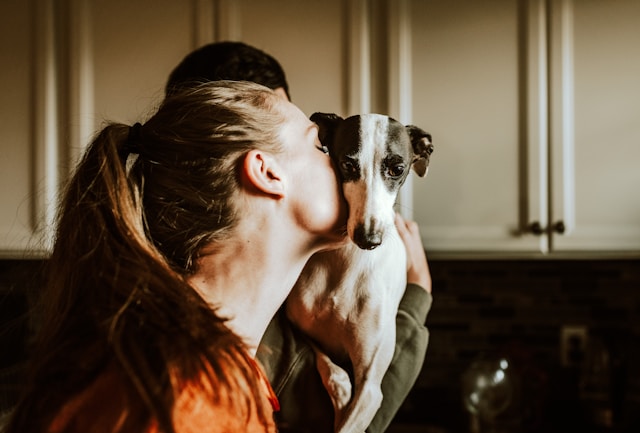Due to the changes in work routines this decade, separation anxiety in dogs is more prevalent than ever. This is especially true of ‘pandemic puppies’, many of which are showing a range of behavioural issues as adults due to poor early socialisation. Explore the root of this condition and how to deal with it, from creating a calming environment to seeking professional help.
Understanding separation anxiety
An estimated 80% of dogs find it hard to cope alone, feeling distressed when separated from their owner. While this anxiety is not always obvious, symptoms can include incessant barking, whining, window-watching and destructive behaviour such as house soiling. However frustrating, it’s important to remember that these reactions are often rooted in fear and insecurity rather than mischief and separate them in your mind from other bad behaviour.
The causes of separation anxiety can vary. Some dogs may develop it due to a sudden change in routine or environment such as being left for an extended period in an unfamiliar home, while others might associate being left with abandonment due to traumatic past experiences. Breed tendencies can also play a role, with some breeds being more prone to anxiety than others.
How to help with separation anxiety
1. Making alone time positive
The first step to managing separation anxiety is gradual desensitisation to help your dog become accustomed to being alone. Start with brief departures and gradually extend how long you stay away, always ensuring your dog is calm before leaving. Over time, this helps to reduce the fear of being alone.
Positive reinforcement is also key. Use treats, toys, and praise to reward your dog when they remain calm during your absences. This creates a positive association with being alone, helping to alleviate anxiety. Consistency in your routine can also help; dogs thrive on predictability, so try to maintain a regular schedule for feeding, walks, and alone time. This might include having set office days and continuing your early starts into the weekend as well.
2. Creating a calming space
Making your home feel comfortable and secure will also help ease separation anxiety in your pup as they will feel safe and looked after even when you’re not there. Investigate the option of dog crates with cushions and covers to create a cocooning effect or place dog beds in main areas decorated with blankets, toys and old clothing with your scent. Leaving the television on or playing calming music is a great relaxing aid that will further reduce stress levels.
Leaving out entertaining activities can also prove soothing as they provide a distraction. Invest in interactive toys and puzzle feeders to keep your dog occupied and mentally stimulated while you’re away.
3. Seeking professional help
If your dog’s separation anxiety persists, it might be time to seek professional help. A vet can provide a thorough assessment to determine any underlying health issues contributing to the behaviour. A qualified behaviourist can offer tailored strategies and techniques to help your dog manage the anxiety.
In some cases, medication might be recommended as a short-term solution to help manage severe anxiety, but you must consult with your vet before deciding to start medication.





